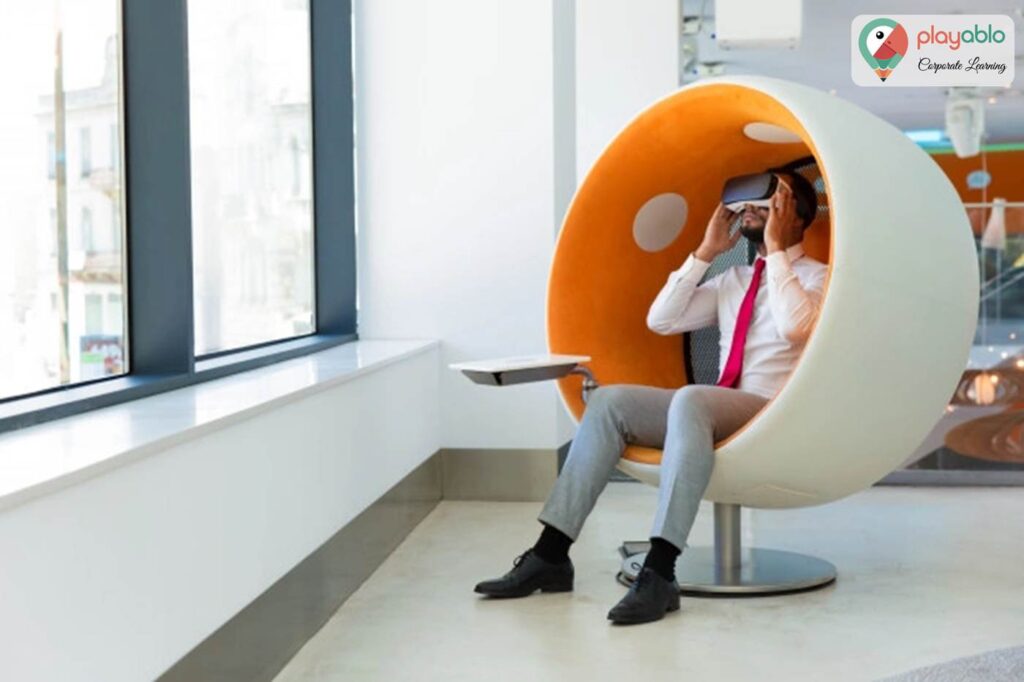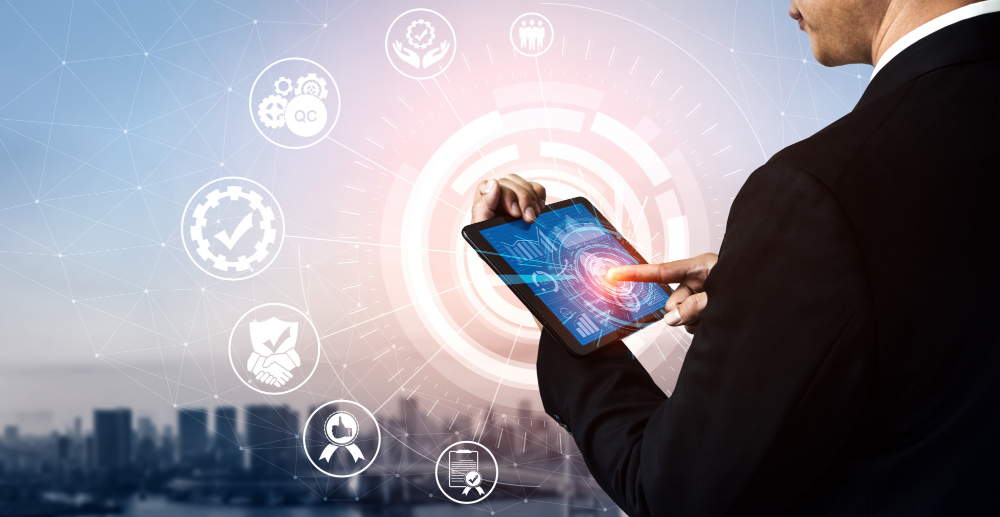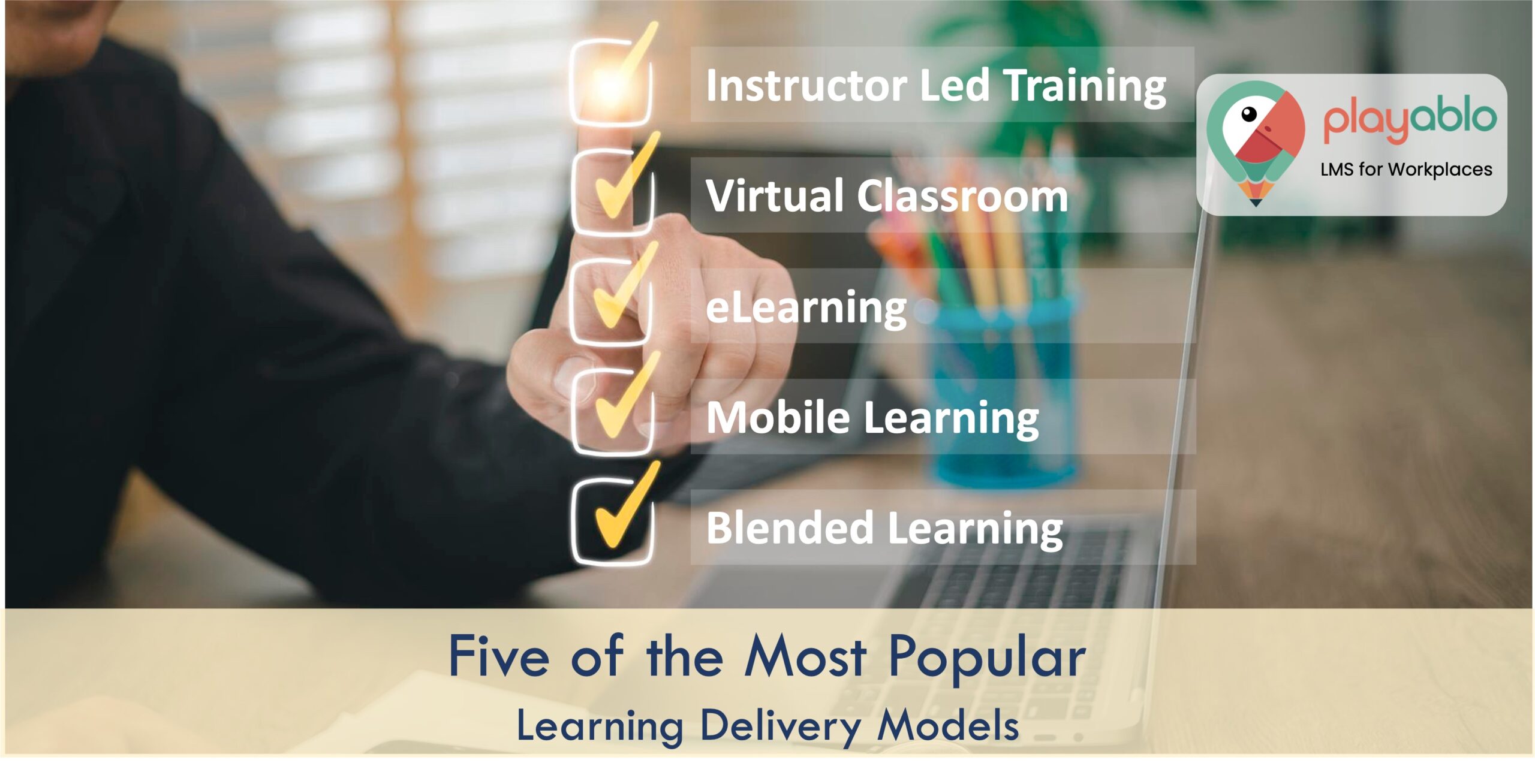The Indian corporate training market, projected to reach $19.1 billion by 2030, is experiencing substantial growth, presenting diverse business opportunities amid a few challenges. This growth is propelled by the escalating demand for a skilled workforce, a heightened focus on talent development, and the adoption of technology-driven training solutions.
Despite these positive trends, challenges such as the absence of standardized training programs, limited budget allocations, and the necessity for customized solutions pose obstacles to market expansion. Nevertheless, the industry holds vast potential for growth, with a noteworthy integration of gamification and microlearning methodologies for increased engagement and knowledge retention.
In recognizing the imperative of upskilling and reskilling to maintain competitiveness, businesses across sectors are increasingly seeking corporate training services. This surge reflects a growing acknowledgment of the critical role continuous learning plays in sustaining a competitive workforce.
Against this backdrop, you find yourself standing at the intersection of reshaping your corporate training strategy. The significance of selecting effective training models becomes increasingly evident. In our exploration, we delve into the five fundamental learning delivery models, unraveling their advantages and disadvantages.
Comprehending these models is vital for aligning your training initiatives with the dynamic needs of your workforce and the evolving corporate landscape in India. Join us on this insightful journey as we navigate the currents of the Indian corporate training landscape together.
Table of Contents
A Run-down of the 5 Most Popular Learning Delivery Models

In the dynamic landscape of corporate training, the significance of effective knowledge dissemination is encapsulated in the term “learning delivery models.” These models serve as the architectural framework, intricately designed to mold tailored learning experiences that align seamlessly with specific organizational objectives.
As the cornerstone of training strategies, they necessitate a strategic orchestration, carefully weaving together technology, resources, and facilities to create an optimal environment for skills development and knowledge acquisition.
At the heart of learning delivery models lies the essence of customization — a deliberate approach to tailoring the learning experience to meet the unique needs and goals of the organization. This customization isn’t merely a cosmetic adjustment but a strategic alignment that ensures the transfer of knowledge is not a one-size-fits-all endeavor.
The utilization of technology becomes a crucial thread woven into the fabric of these models, catalyzing the transformation of traditional training paradigms. Technological integration doesn’t merely signify a shift to digital platforms; it signifies a paradigm shift in how information is accessed, assimilated, and applied. From immersive virtual classrooms to interactive online modules, technology acts as an enabler, transcending the limitations of conventional corporate training delivery methods.
Resources, both human and material, play an integral role in the success of learning delivery models. Expert instructors, engaging content developers, and a supportive administrative infrastructure collectively contribute to the richness of the learning experience. Furthermore, the provision of state-of-the-art facilities, whether physical or virtual, sets the stage for an environment conducive to effective learning.
The strategic interplay of these elements is akin to conducting a symphony where every instrument contributes harmoniously to create a masterpiece. Learning delivery models become the conductor, orchestrating a synchronized blend of technology, resources, and facilities to produce a learning experience that resonates with the organizational goals and the unique characteristics of the learners.
As organizations navigate the complexities of the modern business landscape, the importance of these learning delivery models becomes more pronounced. It’s not merely about delivering information; it’s about crafting an immersive, adaptable, and impactful learning journey. In this intricate dance of methodologies, organizations find the means to not just disseminate knowledge but to cultivate a culture of continuous learning, innovation, and sustained growth.
1. Face-to-face AKA Instructor-led Training
This methodology is a tried-and-true classic. Face-to-face (F2F) training, synonymous with instructor-led training (ILT), is the context in which we all initially learn: we meet and learn from a teacher, trainer, or instructor in the classroom. Mentoring, coaching, hands-on workshops, on-the-job training with a supervisor, and group seminars are all examples of face-to-face training in the workplace. All of these learning delivery models have two things in common: they’re all instructor-led and require all participants to be physically present.
Pros
- Rigorous: F2F corporate training models are ideal for training a small number of people on a specific topic or talent in a short amount of time.
- Human contact: Individual needs can be identified by trainers, who can then assist in unlocking employee potential. They feel the atmosphere of a gathering and know how to handle it.
- Role modeling: Trainers or instructors can serve as role models for employees by showing them how to accomplish specific tasks, and the employees, in turn, look up to them.
Cons
- Scalability constraints: Because of capacity limits, F2F corporate training models are unable to contact everyone. It’s also difficult to duplicate and maintain the same level of consistency from one training session to the next.
- Subjective. The personality of the instructor or trainer has a significant impact on training. Depending on the circumstances, even the same trainer can function differently. For instance, they may grow fatigued at the end of a trip and neglect to impart some element of the knowledge. Furthermore, different trainers can present the same material in different ways.
- Expensive: F2F includes additional costs such as trainer salaries, printed handouts, classroom rental, and travel and lodging.
How to Get the Most Out of F2F Corporate Training Models?

Face-to-face learning delivery models can be beneficial, but they should not be your only option for corporate training. For example, you can choose face-to-face training for jobs that demand precision, accuracy, or working with sophisticated equipment. You’ll be able to see how learners complete needed actions and share your hands-on knowledge to assist them in this way.
If face-to-face training is required due to the pandemic, use well-known video conferencing software and conduct your training online. Schedule Skype or Zoom conversations with students, or explore using webinar platforms to deliver talking-head video lessons. This point brings us to our next type of learning delivery models.
2. Virtual Classrooms
A virtual classroom, also known as virtual instructor-led training, allows you and your learners to meet online in a scheduled video call session to share interactive learning activities, allowing all learners to participate actively in the training process.
For example, you could show a presentation to the participants, then divide them into breakout rooms assign them a group activity, and then bring them back together to discuss the findings. Learners can join your virtual classroom from anywhere in the world and engage at the same time.
Pros
- A tried and true method: Because we’re all used to video conferencing, your employees won’t have to get acclimated to it.
- Feedback: You can observe how learners perform in real-time, seek their opinions, discuss ideas, and answer their questions, just as if you’re all in the same room. This allows you to rectify their errors while also keeping them motivated quickly.
- A feeling of cohesion: You have similar experiences and meet simultaneously in the same virtual location to cooperate and learn. People will feel more connected as a result of this.
Cons
- Technical support: The broadband connection can be shaky, webcams or microphones can act up, or something else can go awry. It would help if you were prepared for the unpredictable.
- Communication gaps: Even though learners and instructors can see and hear each other via video, technical problems and a loss of physical nearness cause a loss of complexity and perspective. Some say it’s as if they’re teaching in a vacuum. As a result, the instructor must use greater effort to maintain everyone’s attention.
- At home, there are numerous distractions: If teachers and learners do not have a specific learning space, they may be easily distracted by their family, pets, pressing job responsibilities, smartphone notifications, and other factors. The quality of the conversation might also be influenced by the varying time zones of the participants.
How to Get the Most Out of Virtual Training Delivery Methods?
Because you and your students are not in the same physical location, catching the moment when people’s thoughts begin to wander might be difficult. To engage students, we advocate creating brief dialogues, snap polls, or quizzes – the more, the better. You won’t need any additional tools for this because virtual classroom software, webinar platforms, and Zoom all include options for creating breakout rooms and running polls.
You may discover that notifying people and keeping track of who attends classes is too time-consuming while preparing learning delivery models. If this is the case, consider employing a learning management system (LMS) that allows synchronous and asynchronous learning to keep virtual classroom instruction under control.
3. eLearning

The use of digital devices and content for training is referred to as an online learning delivery technique. Slide-based courses, interactive quizzes, video courses and tutorials, screencasts, simulations, podcasts, and e-books are the most frequent types of eLearning content. Learners can use their PCs, laptops, tablets, and mobile devices to access this content.
Pros
- Accessible: Learners can take courses or view video tutorials from any location. Because there are no barriers to eLearning, it is very beneficial for remote teams.
- Options for tracking: You may examine specific information on how students proceed through courses, such as their grades, time spent, attempts, and common errors.
- Improved participation: You can create interactive learning delivery models, complete with courses and simulations with characters and multimedia, and experiment with virtual and augmented reality. This approach can hook students, hold their attention, and make studying a pleasurable experience.
- Replicable. You can quickly replicate training using the same materials repeatedly and revise them as needed.
- Self-paced. You may let students choose their own learning pace and sequence, as well as the amount of material they cover at any one time.
Cons
- Technically complex: Employees who aren’t particularly tech-savvy may be hesitant to adopt eLearning tools.
- Specific applications are needed: You’ll require authoring software to design courses and quizzes and an LMS to provide training to your staff for online training.
- Minimal interaction with trainers: Learners cannot contact instructors immediately and obtain immediate feedback.
How to Get the Most Out of eLearning Delivery Models?
Online courses allow you to scale training in your company while avoiding the costs of face-to-face training. You can execute a wide range of jobs with online training, regardless of the size of your audience or how distant they work from your headquarters:
- Provide new hires with a methodical induction and onboarding process.
- Dispersed teams and remote staff should be trained.
- Improve your product knowledge and customer service abilities.
You’ll need the following items to generate and distribute content for all of these training tasks:
- This authoring tool creates online classes, quizzes, dialogue simulations, and more.
- An LMS allows you to track your learners’ training progress by allowing them to examine course content.
Ad: PlayAblo’s Enterprise-Grade Micro-Learning platform is built for millennial learners. Micro-Learning, along with assessments and gamification features, ensures learning outcome measurement along with sustained engagement.
Find out more and request a custom demo!
4. Mobile Learning
This strategy, one of the recent, popular learning delivery models, also known as m-Learning, leverages mobile, portable devices to offer online training information to learners. The content is digital, just as in eLearning, but you’ll need to adapt it to HTML5, present it in smaller chunks, and make sure it adjusts to different screen sizes. Your online course or quiz will only be entirely mobile-friendly after that.
Pros
- Handy: Task-oriented and bite-sized mobile learning content are developed so that learners may quickly discover what they need.
- Interesting: You can use social media to keep in touch with learners, prompting them to submit comments, upload their thoughts and videos, and participate with the information as a group.
- Future-oriented. We are unlikely to abandon mobile gadgets anytime soon because each smartphone is a personal mass medium. According to a poll by lynda.com, 30% of smartphone users said they used their phones to consume organizational training content.
Cons
- Distractive: When a notification beeps, we can’t help but scroll through the feed or check the device. These interruptions can detract from the efficacy of the training process.
- Need for reliable devices: Smartphones with insufficient storage and processing power will be unable to fully exploit the potential of mobile learning.
- A reliable internet connection is a must: For a smooth training experience, signal strength and connection stability are critical.
How to Make the Most of Mobile Learning Delivery Models?

Please put it in place to take advantage of your learners’ mobility. Employees who do not work in an office and are constantly on the move require access to training and learning too. They are in desperate need of these types of learning delivery models. Prepare salespeople, account managers, auditors, and others with business memoranda, directions, and short refresher courses. These materials will come in handy for rapid reference on their devices.
Ad: PlayAblo’s Enterprise-Grade Micro-Learning platform is built for millennial learners. Micro-Learning, along with assessments and gamification features, ensures learning outcome measurement along with sustained engagement.
Find out more and request a custom demo!
5. Blended Learning
Blended learning is a method of instruction that combines classroom and online learning formats. It provides your students with online access to learning resources so they can study at their speed and gather for discussions, group projects, and mentorship sessions.
Using blended learning in your classroom controls schedules and pace, and students can learn synchronously. Some activities and information, however, are set aside for online asynchronous learning and independent study.
Pros
- Continuous: You may have the best of both worlds: face-to-face training and online study flexibility.
- Flexible: You can accept the pandemic’s reality and reduce the time people spend together during face-to-face training.
- Thorough: Blended learning caters to a wide range of learning styles and demands, making it an excellent fit for a wide range of students. There are a variety of blended learning delivery models to select from, so you can find one that works best for your company.
Cons
- Dependent on technology: Blended learning necessitates a robust IT infrastructure and the implementation of specific software.
- Unstable: It’s possible that your students don’t have reliable internet access or aren’t technically prepared to participate in webinars or download recordings.
How to Make the Most of Blended Learning Delivery Models?
For circumstances where you need to maintain some level of live training, consider employing blended learning. It’s beneficial for training topics that require a hands-on approach or instructor guidance. You may, for example, have client-facing departments take an online course on customer service principles and then practice communication skills during face-to-face training sessions.
Blended learning accounts for 43% of all training hours, according to the 2021 Training Industry Report. Blended learning appears to be the most popular training delivery mode, with 56 percent of firms planning to combine classroom training with remote learning by 2022.
Conclusion
Each training delivery method we’ve studied has its own function and application area. None of these is a miracle, but they can produce excellent outcomes when used correctly. It’s best not to limit yourself to face-to-face instruction but to experiment with new methods and even combine them! This approach will allow you to address potential bottlenecks in any technique and train personnel more effectively.







Comments are closed, but trackbacks and pingbacks are open.